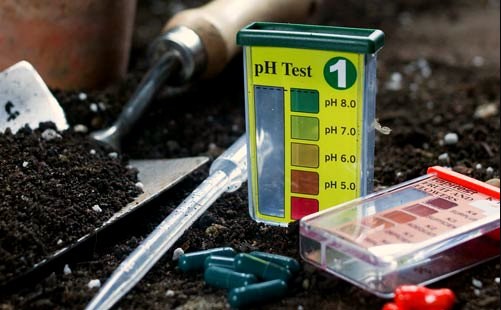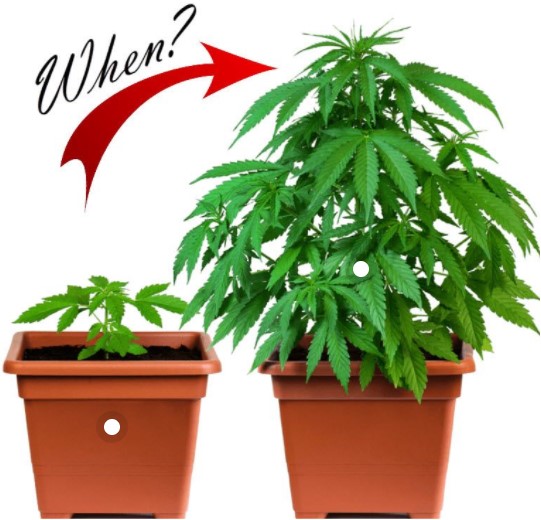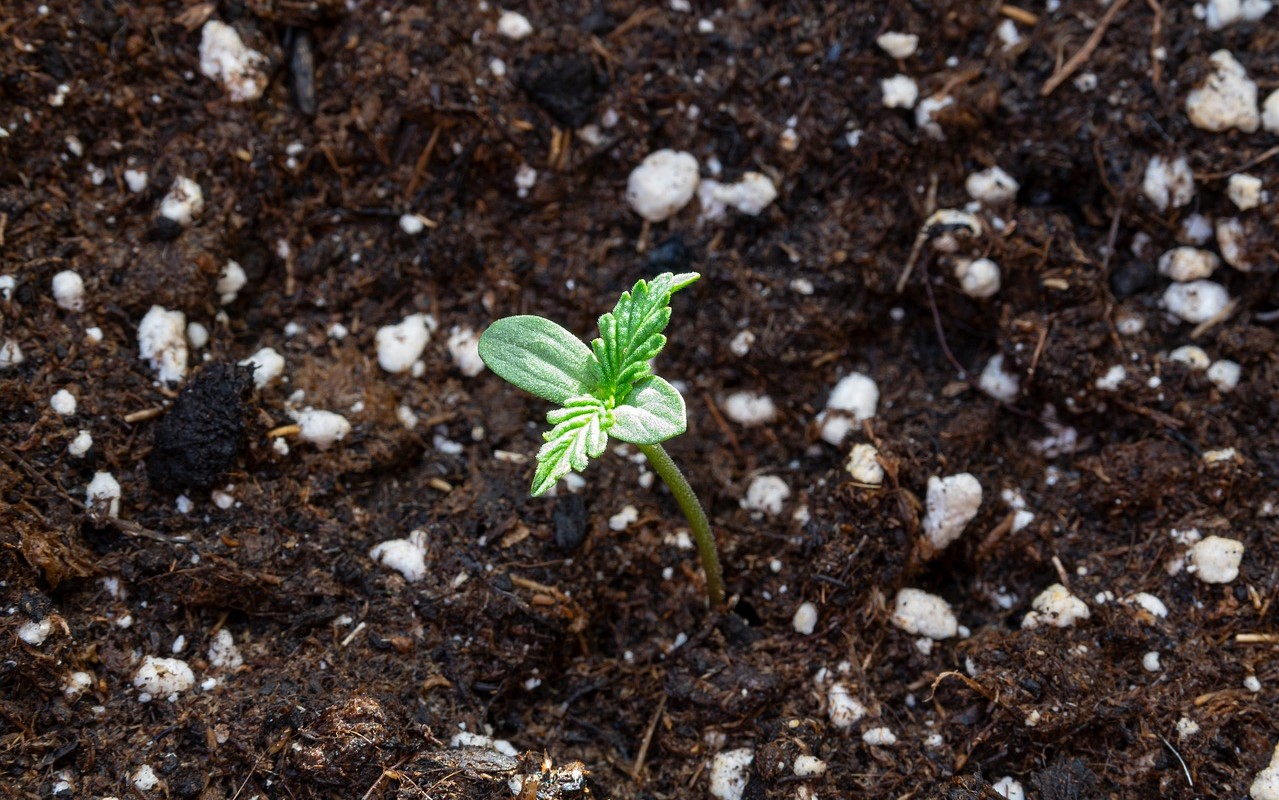Now we come to the foundation of weed plant growing, so to speak. In order to use the correct soil, there are a few things to keep you should keep in mind.
Soil Consistency is paramount: The nature of the earth is important to allow enough oxygen to reach the roots. If the soil is too loamy or too solid it may damage or suffocate the roots. Good soil consistency also ensures proper drainage (water runoff).
You use “potting soil” to grow young weed plants ( cuttings and seedlings ).
This soil is specially designed for young plants and contains fewer nutrients and salts. So the young weed plants are not overwhelmed. If the cannabis plant has reached a size where it has developed the first 3-5 sets of leaves, it should be repotted or exposed to fertilized soil.
For larger weed plants, pay attention to the table of contents on the soil bag. How high is the PH value and does the earth already contain perlite? Most of them should also have nutritional information. (N) nitrogen, (P) phosphorus and (K) potassium.
Soil for Weed Growing- Drainage
Perlite in soil for cannabis cultivation ventilation and water drainage.
Most of the time, the earth only needs to be adapted a little. If the earth is too acidic, add a little lime. If it is too solid then some perlite and sand to loosen it up etc.
Composition of the earth
A good soil consists of approx. 60% regular soil no additives, (Brown soil and of a loose consistency, 20-25% compost, 10-15% sand (drainage) and 5-10% perlite. Mix thoroughly! When no sand is available then increase the perlite to 20 – 25%
Perlite is a natural product made from volcanic natural rock. It is ideal as a reservoir for water and also serves to ventilate the roots. In the meantime, a little perlite has been added to most of the commercially available potting soil.
Soil for Weed Growing – Soil Acidity
Lime for hemp soil and substrates to counteract acid
Lime is a natural product and the ideal means to counteract excessively acidic soil!
But adding too much lime or soil with the correct pH value is bad. Therefore, the pH value of the earth should be determined before it is mixed with lime (outdoor and indoor).
In addition, the calcium contained in the lime strengthens the weed plant and its immune system.

PH value (acidity)
The pH value provides information on how acidic or basic the earth is. The scale ranges from 1-14, with 7 being neutral, 1 being strongly acidic and 14 being highly basic (alkaline).
The correct pH value for the soil of a weed plant is between 5.6 – 6.5, i.e. slightly acidic.
When watering or fertilizing, the pH value changes depending on the addition of substrates. If the earth is too acidic, it can be corrected by adding an alkaline agent such as lime. If the earth is too basic by adding an acid, for example, diluted vinegar water. However, this can be regulated better and more gently with commercial pH regulators.
The pH value can be easily determined at any time using commercially available pH testers such as litmus paper.
If the pH value of the earth is not within the tolerance range, this can lead to poor nutrient absorption, dying of thirst despite watering and even death of the weed plant. So the pH value of your soil mixture is a serious growing consideration.
EC tester to determine the amount of nutrients and dissolved solids in the water
This is the electronic conductivity of a nutrient solution. The higher the value, the stronger or more concentrated the nutrients in the nutrient solution or in the soil.
In other words, the EC value can be used to regulate the ideal addition of nutrients to the weed plant over its life cycle. For cannabis, the value should be increased from initially 1 to later in the flowering phase to approx. 2.
Devices to measure the EC value are available from around $30 in every good grow shop.
However, this is not absolutely necessary to take your first steps in weed plant cultivation. It also helps to have a feeling for the plants (the green thumb). For the experienced grower, however, it is a useful tool to create ideal conditions and get the best out of the cannabis plants.
Soil for Weed Growing – Transplanting

When to repot cannabis?
The right time to re-pot a weed plant is when the roots have penetrated the existing soil. This guarantees the plant continuous root growth and thus creates better conditions for growth.
Do not re-pot the cannabis plant until the soil is dry.
How to repot !?
The dry earth contracts and the root ball is easier to get out of the pot. Plastic pots have an advantage here, as the outer walls can be pressed in and the soil can be loosened from the pot.

With young or weaker plants you turn the pot so that the root ball and soil can slip out. You hold the root ball with one hand (see picture) and you have already transported the weed plant out of the pot, protecting the roots.
The roots of a hemp plant are as important as branches and foliage. Therefore, in addition to the right soil, space also plays an essential role.
Since the roots provide the water and nutrients for the weed plant, it is important to ensure that the roots have enough space in the ground to be able to develop their intricate network. This is also referred to as a 1: 1 ratio of leaves and flowers to roots. This means the size of the root network corresponds to the size of the cannabis plant above the ground. Cannabis is a taproot and requires relatively deep soil. Therefore, care should be taken when preparing the earth and the place.

